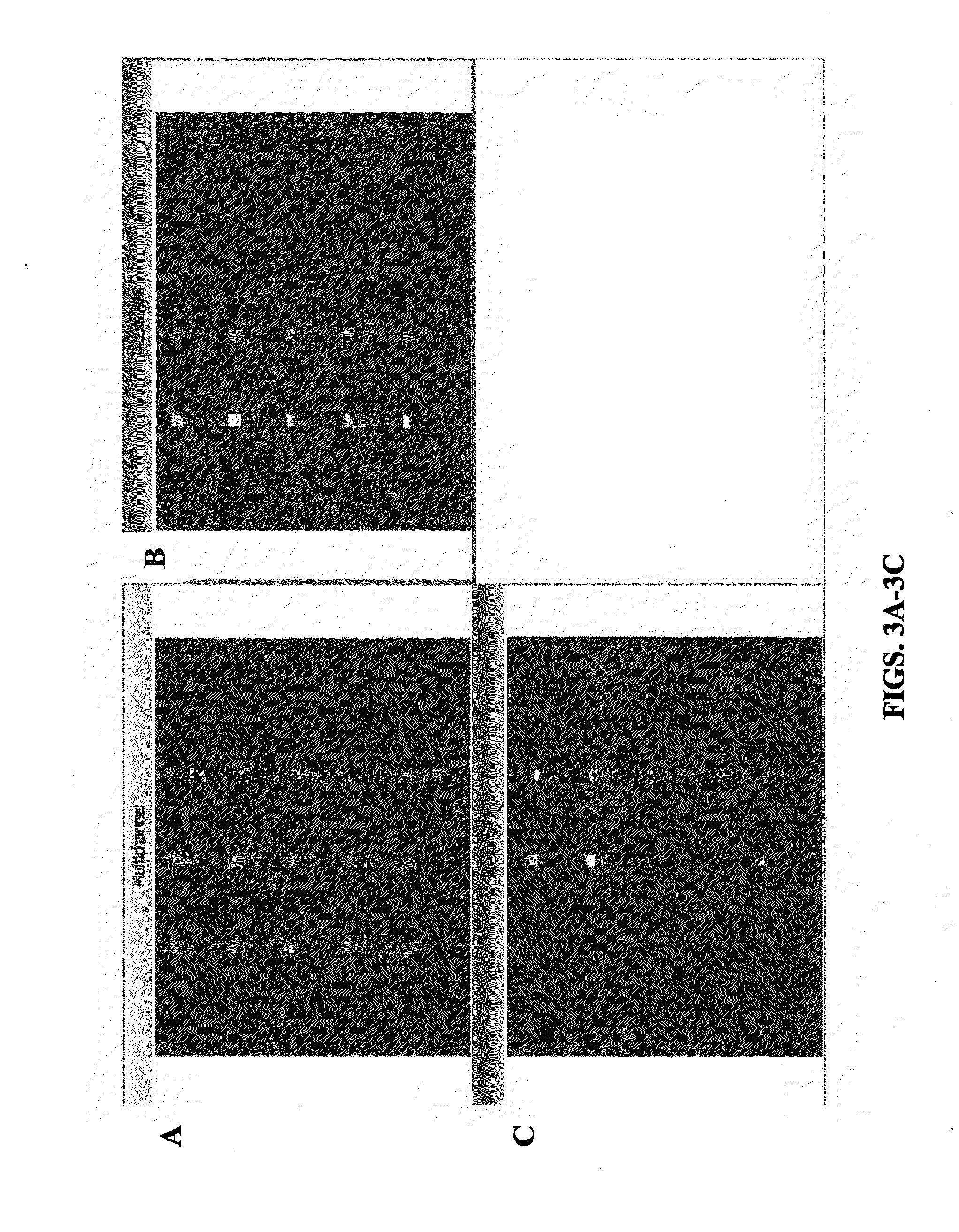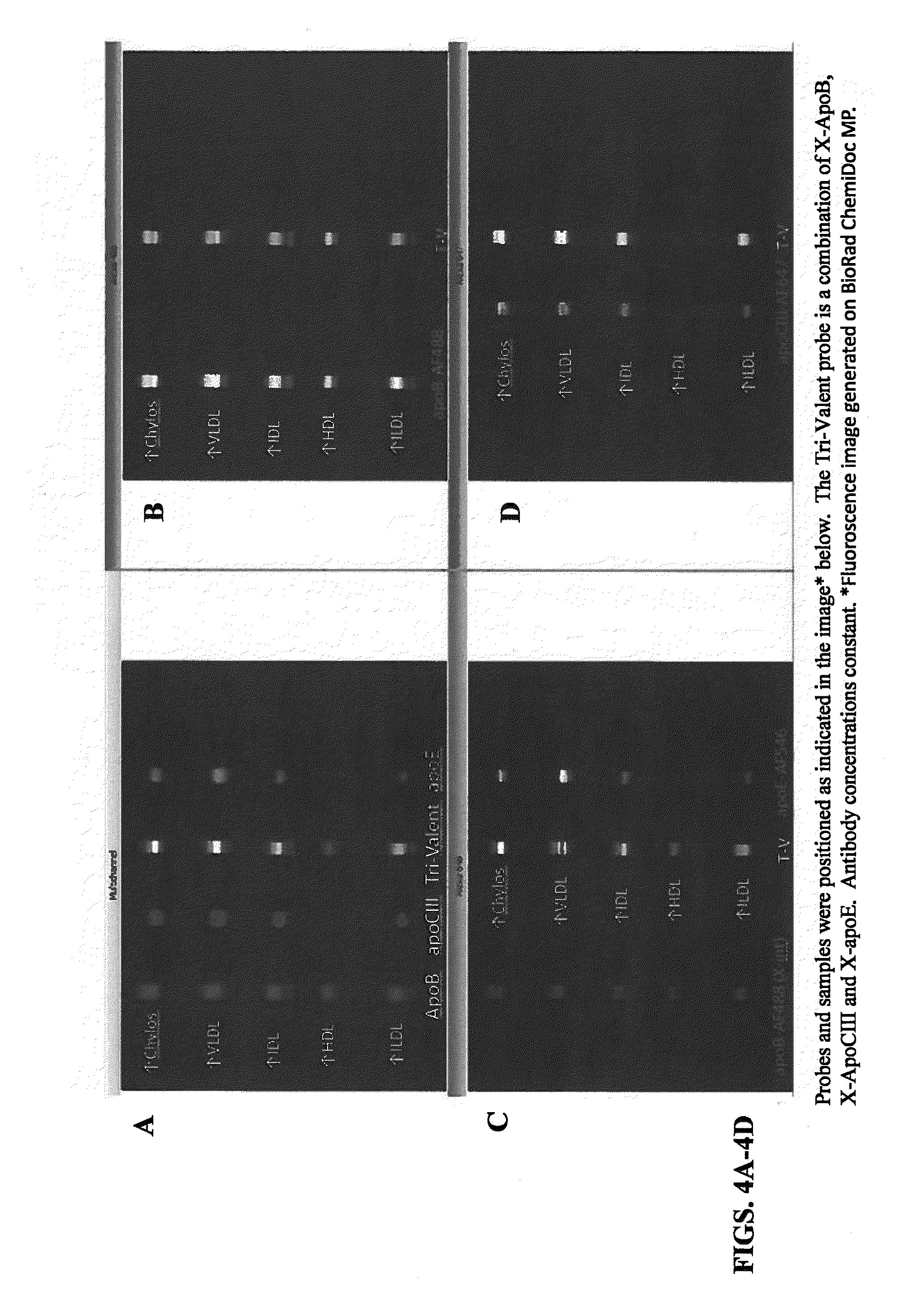Flourescent in-situ detection of lipid particle apolipoproteins within primary electrophoretic matrix
- Summary
- Abstract
- Description
- Claims
- Application Information
AI Technical Summary
Benefits of technology
Problems solved by technology
Method used
Image
Examples
example 1
In Situ Detection of Apo-B and Apo-CIII
[0107]FIGS. 3A-3C show an example of the integrated detection technique with multiple antibody cocktail applied to an electrophoresed gel of multiple patient samples. In particular, five patient samples were applied to a prepared gel in triplicate. The five samples are distributed vertically and the column application was repeated three times. Alexa 488 dyes (green emissions) were used to identify Apo-B-linked particles and Alexa 647 dyes (orange emissions) were used to identify Apo-CIII-linked particles. The materials and methods employed are described in more detail below.
[0108]The patient samples underwent electrophoreses, separating the lipoproteins in each lane as described in U.S. Patent Application Publication No. 2012 / 0052594, which is hereby incorporated by reference in its entirety. DI water was substituted for the TBS wash / re-hydration of the gel post electrophoresis and an immunofixation. In general, a SPIFE Electrophoresis System b...
example 2
In Situ Detection of Apo-B, Apo-CIII, and ApoE
[0117]In a second experiment, monovalent and trivalent fluorescence antibody probes were prepared and successfully shown to probe apolipoproteins in intact lipid particles separated by electrophoresis on a single gel matrix. Patient samples with known lipoparticle profiles were prepared and applied to gels for separation and analysis according the same protocols as Example 1. The known lipoparticle compositions included those with increased chylomicron content, increased VLDL content, increased LDL content, two with increased IDL content, and increased HDL content. After separation, the lanes were probed with anti-ApoB conjugated to Alexa 488, anti-ApoC-III, conjugated to Alexa 647, and anti-ApoE conjugated to Alexa 546, independently (with monovalent probes) and collectively (the trivalent probes). The resultant labeled lipoprotein gels were exposed to fluorescence imaging and the peaks were recorded. The raw gel images are presented in...
PUM
 Login to View More
Login to View More Abstract
Description
Claims
Application Information
 Login to View More
Login to View More - R&D
- Intellectual Property
- Life Sciences
- Materials
- Tech Scout
- Unparalleled Data Quality
- Higher Quality Content
- 60% Fewer Hallucinations
Browse by: Latest US Patents, China's latest patents, Technical Efficacy Thesaurus, Application Domain, Technology Topic, Popular Technical Reports.
© 2025 PatSnap. All rights reserved.Legal|Privacy policy|Modern Slavery Act Transparency Statement|Sitemap|About US| Contact US: help@patsnap.com



